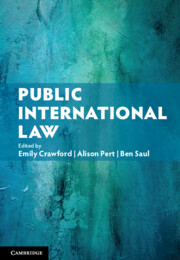Refine search
Actions for selected content:
36807 results in Cambridge Textbooks
3 - The Anglo-Saxon Legacy
-
- Book:
- A Historical Introduction to English Law
- Published online:
- 04 May 2023
- Print publication:
- 11 May 2023, pp 44-63
-
- Chapter
- Export citation
10 - Speech Dynamics
-
- Book:
- Phonetics and Speech Science
- Published online:
- 19 May 2023
- Print publication:
- 11 May 2023, pp 230-272
-
- Chapter
- Export citation
8 - Vector Autoregression
- from Part III - Multivariate Modeling and Forecasting
-
- Book:
- Time Series for Data Scientists
- Published online:
- 01 June 2023
- Print publication:
- 11 May 2023, pp 341-389
-
- Chapter
- Export citation
11 - Suprasegmentals
-
- Book:
- Phonetics and Speech Science
- Published online:
- 19 May 2023
- Print publication:
- 11 May 2023, pp 273-310
-
- Chapter
- Export citation
Copyright page
-
- Book:
- A Historical Introduction to English Law
- Published online:
- 04 May 2023
- Print publication:
- 11 May 2023, pp iv-iv
-
- Chapter
- Export citation
7 - Sounds of North American English
-
- Book:
- Phonetics and Speech Science
- Published online:
- 19 May 2023
- Print publication:
- 11 May 2023, pp 176-185
-
- Chapter
- Export citation
3 - Anatomy and Physiology of Speech
-
- Book:
- Phonetics and Speech Science
- Published online:
- 19 May 2023
- Print publication:
- 11 May 2023, pp 45-80
-
- Chapter
- Export citation
4 - Air Pressure and Aerodynamics
-
- Book:
- Phonetics and Speech Science
- Published online:
- 19 May 2023
- Print publication:
- 11 May 2023, pp 81-99
-
- Chapter
- Export citation
Contents
-
- Book:
- A Historical Introduction to English Law
- Published online:
- 04 May 2023
- Print publication:
- 11 May 2023, pp vii-x
-
- Chapter
- Export citation
4 - The Norman Conquest (c.1066–1154)
-
- Book:
- A Historical Introduction to English Law
- Published online:
- 04 May 2023
- Print publication:
- 11 May 2023, pp 64-83
-
- Chapter
- Export citation
8 - Voice, Phonation, and Nasality
-
- Book:
- Phonetics and Speech Science
- Published online:
- 19 May 2023
- Print publication:
- 11 May 2023, pp 186-210
-
- Chapter
- Export citation
2 - Phonetic Transcription
-
- Book:
- Phonetics and Speech Science
- Published online:
- 19 May 2023
- Print publication:
- 11 May 2023, pp 27-44
-
- Chapter
- Export citation
Frontmatter
-
- Book:
- Time Series for Data Scientists
- Published online:
- 01 June 2023
- Print publication:
- 11 May 2023, pp i-iv
-
- Chapter
- Export citation
7 - The English Justinian (c.1272–1307)
-
- Book:
- A Historical Introduction to English Law
- Published online:
- 04 May 2023
- Print publication:
- 11 May 2023, pp 136-155
-
- Chapter
- Export citation

Public International Law
-
- Published online:
- 09 May 2023
- Print publication:
- 23 May 2023
-
- Textbook
- Export citation
Chapter 2 - Person-centred, relationship-based practice
-
-
- Book:
- Working with Families Experiencing Vulnerability
- Published online:
- 03 April 2023
- Print publication:
- 09 May 2023, pp 27-44
-
- Chapter
- Export citation
Chapter 18 - Working with kinship care families
-
-
- Book:
- Working with Families Experiencing Vulnerability
- Published online:
- 03 April 2023
- Print publication:
- 09 May 2023, pp 329-346
-
- Chapter
- Export citation
Chapter 17 - Supporting people of diverse genders and sexualities
-
-
- Book:
- Working with Families Experiencing Vulnerability
- Published online:
- 03 April 2023
- Print publication:
- 09 May 2023, pp 310-328
-
- Chapter
- Export citation
Chapter 4 - Poverty and its impacts on children and families
-
-
- Book:
- Working with Families Experiencing Vulnerability
- Published online:
- 03 April 2023
- Print publication:
- 09 May 2023, pp 61-78
-
- Chapter
- Export citation
Acknowledgements
-
- Book:
- Working with Families Experiencing Vulnerability
- Published online:
- 03 April 2023
- Print publication:
- 09 May 2023, pp xxx-xxxii
-
- Chapter
- Export citation
